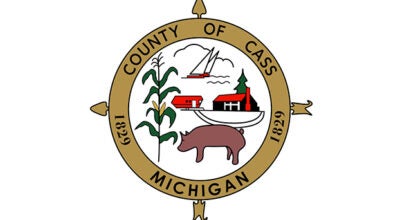City approve Brownfield TIF incentive program for proposed plant
Published 10:06 am Wednesday, September 13, 2017
Indeck leaders left the Niles city council meeting Monday night grinning, after city council members voted 7-1 to approve resolutions to adopt a tax abatement and reimbursement agreement with the natural gas company.
Council member Daniel VandenHeede, a representative of the 2nd Ward, voted against the resolutions.
The incentive program helps developers to cover the cost of revitalizing blighted or contaminated areas defined as Brownfield properties. In addition to city approval, Indeck will also have to get approval from the Michigan Economic Development Corporation and the state.
Eric Helzer, the Indeck incentives consultant, said the approval was another step forward in the project’s development.
If approved, the Brownfield tax increment financing incentive will provide the natural gas to energy company with a $91 million tax abatement for up to 13 years and a $60 million tax increment-financing plan for up to 30 years. The program applies to four parcels of land that Indeck has owned since they bought the property at 2200 Progressive drive more than 20 years ago.
In return, City Administrator Ric Huff said the city could gain funds culminated from real-property tax value, Public Act 328 tax abatement and Brownfield TIF. Within the first 13 years of plant operation, he said the city could gain an annual $121,000 to $147,000 in addition to $45,000 in real property tax incomes, $80,000 in revolving loan fund contributions and between $11,000 to $12,000 to defray administrative costs to the city.
VandenHeede said the community should express caution when considering the numbers presented by Indeck.
“These numbers I would take with a grain of salt,” VandenHeede said. “We don’t know what is going to happen 13 years from now.”
Helzer said this concern was not uncommon. However, he said the company was agreeing to the numbers reflected within the presentation because they were part of the reimbursement agreement.
Prior to council members’ votes, Helzer gave a presentation with Douglas Kilmer, the client service manager for TRC Environmental Corporation and Kelly Inns, the senior project engineer for Indeck.
The presentation included a review of the site’s history, which was owned by the Michigan Central Railroad. The railyard was operational in the industrial park area from 1848 to 1950.
Also addressed was how they planned to remediate contamination at the site caused by earlier railroad activity.
“This is an opportunity to put [the property] back into a tax revenue generating parcel,” Kilmer said.
Kilmer said the railroad company imported foundry sand and slag that has been found to contain metallic elements, which the company is now looking to try and manage today.
The company is working with the Department of Environmental Quality to try and manage the contamination on site, Kilmer said.
To do so, the company plans to remove existing buried and subsurface debris by either repurposing, recycling or isolating the contaminants on site.
“Basically, what we are trying to avoid is hauling this soil off to the landfill, because it is just not good landfill space,” Kilmer said. “is an excessive cost kind of thing.”
City council members who voted in favor of the program agreed tha,t in addition to financial benefits, remediation of the property was a gain in the city’s favor.
VandenHeede questioned some aspects of the remediation process.
“To me, it does not look like you are remediating anything,” VandenHeede said. “You moving the soil to trenches and foundations and putting it somewhere else on site.”
In response, Kilmer said the remediation process involves more than hauling contaminants away. He said the goal was to make the property safe for its proposed use. To do so, company officials would be utilizing some methods of creating contact barriers, such as plant or top soil coverage.
Additionally, he said Indeck wanted to make sure that nothing would be leaving the property and contaminating other areas. He also said it was within protocol for the contaminants to remain on site so that they could be monitored.
Less than 20 years ago, Indeck had proposed two separate plans for a plant. Both times, the projects fell through.
“We are taking a big risk having another big white elephant out there,” VandenHeede said. “If gas prices spike and it gets shuttered , then we are worse off.”
Indeck is expects to break ground on construction in December 2017, with plans to be operational by August 2020.






